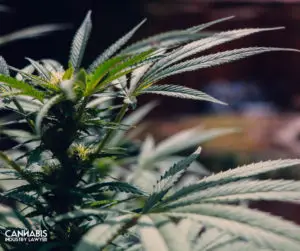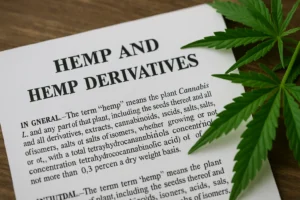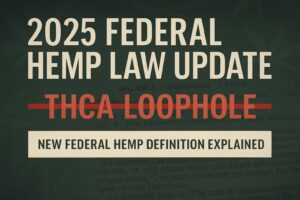USDA Final Rule on Hemp – Total THC – Delta 8 & Remediation
 USDA Final Rule on Hemp was finally released on January 15, 2021 based on the previous set of USDA hemp regulations that drew public comments from almost 6,000 people. USDA Final Rule on Hemp will be effective on March 22, and is currently available for viewing in the Federal Register.
USDA Final Rule on Hemp was finally released on January 15, 2021 based on the previous set of USDA hemp regulations that drew public comments from almost 6,000 people. USDA Final Rule on Hemp will be effective on March 22, and is currently available for viewing in the Federal Register.
This time, the latest USDA Final Rule on Hemp makes several highly praised changes, superseding the DEA interim final rule (IFR), that are seen as favorable to both hemp producers and regulatory authorities.
Although contentious aspects of the IFR remain, industry members are hopeful they will be amended in time, and this could represent a new era of more industry friendly regulations.
RELATED POST: Is Delta-8 Legal?
RELATED POST: DEA Hemp Rule (IFR)
What Does USDA Final Hemp Regulations Say
This USDA Final Rule on Hemp includes regulations to approve plans submitted by States and Indian Tribes for the domestic production of hemp. This rule also includes regulations on the Federal hemp production plan for producers in States or territories of Indian Tribes that do not have their own USDA-approved plans.
The program provides requirements for maintaining records about the land where hemp is produced, testing the levels of total delta-9 tetrahydrocannabinol, disposing of non-compliant plants, licensing hemp producers, and ensuring compliance under the new program.
The USDA Final Hemp Regulations on Sampling
The USDA Final Rule on Hemp made several changes to sampling that should reduce burdens on both growers and authorities.
After many public comments stating that 15 days was far too little time to collect an appropriate amount of samples from each producer in the state, the rule increased the sampling window. Samples for testing now need to be taken up to 30 days before a farmer plans to harvest.
The rule also slightly modified from where on the plant samples need to be taken. While the IFR required collecting a sample from the top third portion of the plant, USDA Final Rule on Hemp determines samples should be taken “approximately five to eight inches from the ‘main stem’, ‘terminal bud’, or ‘central cola’ of the flowering top of the plant.”
This will allow sampling agents to collect more stem and leaf material than previously allowed and reduce instances of hot crop, given that stems and leaves typically contain lower levels of cannabinoids, and THC, than the flowers.
Sampling protocols may take into account:
- seed certification processes that identify varieties that have consistently produced compliant hemp plants;
- whether the producer is conducting research on hemp at an institution of higher learning or that is funded by a federal, state or tribal government;
- whether a producer has consistently produced compliant hemp plants over an extended period of time;
- whether a producer is growing “immature” hemp, such as seedlings, clones, microgreens or other non-flowering cannabis, that does not reach the flowering stage;
The USDA Final Hemp Regulations on Testing
Unfortunately, The USDA Final Rule was not as generous answering one of the most highly requested changes in public comments: increasing the limit of THC on hemp. The final rule retains that hemp must remain below 0.3% total THC on a dry-weight basis.
Total THC is defined as the sum of the delta-9 THC and tetrahydrocannabinolic acid. On its own, tetrahydrocannabinolic does not produce psychoactive effects like delta-9 THC, but it can be converted to THC through decarboxylation, which is the process required for testing.
While the final rule implemented generally positive sampling changes for the industry, THC testing will, for the most part, remain burdensome.
The USDA was unable to change the limit previously established, as that limit was written into law in the 2018 Farm Bill.
However, legislation has already been introduced at the federal level by Sen. Rand Paul to amend that limit to 1%, which would finally put an end to the total THC versus delta-9-THC debate.
Another burdenson regulation that was heavily criticized in the public comments was the requirement for labs testing hemp to be registered with the U.S. Drug Enforcement Administration (DEA).
“Although AMS received comments in opposition to this requirement, AMS is retaining the requirement in this final rule that any laboratory testing hemp for purposes of regulatory compliance must be registered with DEA to conduct chemical analysis of controlled substances… ,” the final rule states. “Registration is necessary because laboratories could potentially handle cannabis that tests above 0.3 percent THC on a dry weight basis, which is, by definition, marijuana and a Schedule 1 controlled substance.”
The USDA announced the delay of the requirement for labs to be registered by the DEA back in 2020, along with others outlined in the IFR, that delay was extended under the USDA Final Rule until December 2022. There is no need to read too much into the situation, but it could mean some acknowledged that those provisions are not necessarily right.
One very positive change made by the USDA Final Rule on the testing front: The negligence threshold was raised from 0.5% to 1%, which means if hemp tests above 0.3% but below 1%, it will still need to be disposed of or remediated, but will not be considered a negligent violation
- Those with crops testing at or above 1% THC will receive a Notice of Violation from the USDA
- Producers with more than three negligent violations within a five-year period will be ineligible to participate in the licensed hemp program for the next five years.
- Producers are only subject to a maximum of one negligent violation per year, even if their hemp from multiple lots tests up to 1% THC.
If hemp does test “hot” above the 0.3% THC limit, the final rule has given producers additional options for disposal beyond the total destruction written into the IFR.
States now have several options for more productive and less wasteful methods of disposal that can result in useful soil amendments. Those include:
- plowing under
- mulching/composting the hemp
- disking
- shredding the biomass with a bush mower or chopper.
Producers may also bury or burn their hot hemp. (The AMS implemented these additional options in early 2020, but they were not written into the IFR.)
The final rule implements a brand-new option for hot crops: remediation.
The rule states producers can remediate their material by “removing and destroying flower material, while retaining stalk, stems, leaf material, and seeds.” Producers may also shred the entire plant to create a “biomass-like material” and then retest it for compliance.
Producers also no longer need to use a DEA-registered distributor or law enforcement to dispose of hot hemp.
USDA Final Rule on Hemp and Remediation
The IFR did not provide additional remediation options. The only alternative was to completely dispose of the non-compliant material. This time the final rule implements a brand-new option for hot crops: remediation, mentioning that alternative 82 times throughout the document
The rule states producers can remediate their material by “removing and destroying flower material, while retaining stalk, stems, leaf material, and seeds.” Producers may also shred the entire plant to create a “biomass-like material” and then retest it for compliance, giving them the opportunity to remediate non-compliant crops in order to minimize financial risk associated with the loss of investment in their hemp crop
Producers also no longer need to use a DEA-registered distributor or law enforcement to dispose of hot hemp.
States now have several options for more productive and less wasteful methods of disposal that can result in useful soil amendments. Those include:
- plowing under
- mulching/composting the hemp
- disking
- shredding the biomass with a bush mower or chopper.
USDA Final Hemp Rule on WIPHE
The 2018 Farm Bill directed USDA to establish a national regulatory framework for hemp production in the U.S., and the final rule outlines provisions for this mandate. The IFR and this final rule do not cover hemp or its products beyond production. Further, DEA has issued regulations covering some of these products or “in-process materials”. Accordingly, this final rule does not address “in-process materials,” processors, end-products, processing of CBD or other cannabinoids or anything that may contain hemp or hemp byproducts.
Don’t miss out on our Marijuana Legalization Map where you can browse the current status of laws in every state in the United States and see all our posts on each of them.
Check Out:
- Tom Howard at CannabisIndustryLawyer.com
- Miggy at Cannabis Legalization News
Interested in coming on as a guest? Email our producer at [email protected].




